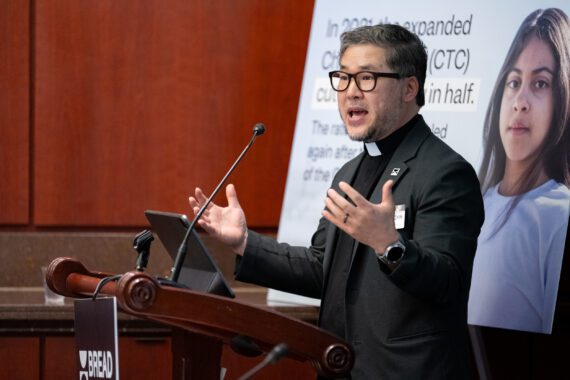Editor’s note: This is the second in a series that explores how anti-hunger advocates can help promote gender pay equity as an essential element of ending hunger.
Institute Insights’ earlier piece on gender pay equity, published in the April 2024 issue described racial and gender pay inequities as an integral part of the U.S. economy. When the first federal legislation on gender pay equity, the Equal Pay Act of 1963, was enacted, women who worked full-time year-round were paid 59 cents for every dollar paid to men.
Nearly 60 years later, in 2022 (latest data available), women who worked full-time year-round were paid 84 cents for every $1 paid to men.
Pay disparities add up quickly. In 2021, women working full-time year-round were paid, on average, $9,954 less than their male counterparts. That is enough to buy a lot of groceries.
The impact of these missing funds on the U.S. economy has also been dramatic. Researchers at the Center for American Progress did the math: Between 1967 and 2021, in 2021 dollars, the total amount lost due to the gender pay gap was $61 trillion. That’s “trillion” with a T—nearly double the current U.S. government debt and nearly 21/2 times the 2022 U.S. gross domestic product.
Every year, the United States observes Equal Pay Day. This is the date when U.S. women who work full-time, year-round have reached the pay level that men received the previous year. Put another way, Equal Pay Day was March 12, 2024, meaning that women worked for the first 2 ½ months of 2024 to “catch up” to the amount men were paid in 2023.
But women in some specific groups—including those who are Asian American, Native Hawaiian, and Pacific Islander (AANHPI), Black, Latina, Native American, or mothers—do not reach Equal Pay Day until later. These Equal Pay Days are April 3 for AANHPI women, when calculated with the inclusion of the many part-time or part-year workers in this community; July 9 for Black women; August 15, 2023 (and to be determined for 2024) for mothers; October 3 for Latinas; and November 21 for Native American women.
The national organization Equal Pay Today has also named June 13 LGBTQ Equal Pay Awareness Day in an effort to ensure that more data is collected on equity in the community and its subgroups. To this end, Congress has previously introduced the LGBTQIA+ Data Inclusion Act, but it has not yet been enacted. There is also a lack of specific data on other subgroups of female workers, such as older women and women without a high school diploma.
Has the Equal Pay Act made a difference? Yes, but not nearly enough. Over the 56 years of federal records that are available, the pay gap has decreased by 25 cents. Progress must be stepped up, because if the gap continues to decline at the average rate of the years 2000 to 2021, it will take an additional 42 years to close the gender pay gap. Today’s 25-year-old women would not see pay equity until after their retirement.
Racial and gender pay inequities contribute to the fact that single mothers and their children have the highest poverty rates in the country. In 2021, the poverty rate for single-mother families was 31.3 percent. Poverty was even more common in families led by women of color: 37.4 percent of families with Black mothers, 35.9 percent of Hispanic families, and 42.6 percent of Native American families had incomes below the poverty line.
The evidence mentioned so far points to the need for proactive government policies to speed up progress toward racial and gender equity in the U.S. economy.
One example of such a proactive policy is the Child Tax Credit (CTC) expansion. Bread has been persistent in its advocacy for this policy improvement because it would reduce poverty among families with children, particularly families of color. We know this because, when tens of millions of families became newly eligible for the CTC in 2021, poverty among children began to decrease almost immediately. But when Congress let the CTC expansion expire, child poverty increased rapidly again.
In March 2024, the Center for American Progress published its Playbook for the Advancement of Women in the Economy. It is full of examples beyond the CTC expansion of how the federal government can advance racial and gender equity while also strengthening the U.S. economy.
The next piece in this pay equity series will examine how the Playbook’s recommendations can work in combination with plans such as the White House National Strategy on Hunger, Nutrition, and Health to end hunger in the United States.
Michele Learner is managing editor, Policy and Research Institute, with Bread for the World.



